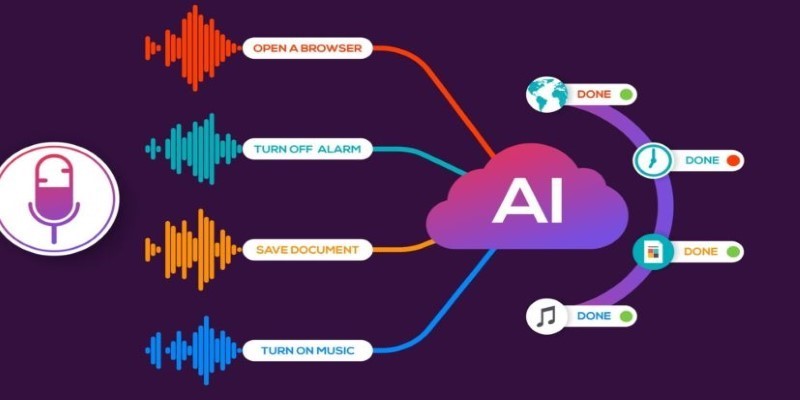Imagine not even lifting a finger and purchasing what you need. No clicks. Nothing browsing. No checkout system. Zero-click purchase is based on this concept and is a quickly expanding trend in eCommerce. This approach orders for you based on clever technology predictions of your demands. It is like having a computer assistant shopping on your behalf. Everything from everyday needs to groceries can be supplied without your involvement.
That sounds handy, then. Shopping is quicker and simpler than ever as more businesses use this strategy. However, is this truly the direction in which internet buying is headed? Or is it just a fad? This article will discuss zero-click purchases, their increasing popularity, and their implications for consumers and companies.

Modern online shopping allows zero-click buying, in which case no checkout action is involved. There is no button to click, so product browsing or cart item addition is unnecessary. The system automatically orders items using your prior buying habits, saved preferences, and clever techniques. For instance, if you often buy coffee every two weeks, the system will schedule the order for you at the appropriate moment. Modern technology, including AI and machine learning, powers this procedure.
Smart assistants, linked apps, or subscription services usually help it to work. These tools monitor your use and determine when you should reorder for yourself. For frequent purchases like toilet paper, toothpaste, or pet food, once the system is configured, it runs in the background with minimal of your work. You can stop or modify the settings anytime.
Smart technology drives zero-click purchases to help you make decisions. One of the main factors is artificial intelligence. It picks your tendencies and investigates your shopping past. The system notes, for instance, whether you order coffee every two weeks. Then, it orders at the right moment without questioning you. Alexa and Google Assistant, among voice assistants, help with this process. Using voice commands or tracking past requests, they may organize objects.
Certain smart fridges and other house appliances sense when things run low. They automatically notify restock milk, eggs, or snacks. Phone apps are also important. They link with smart tools and compile information on your preferred shopping times and tastes. Machine learning drives these systems' improvement over time. They improve in foreseeing your requirements. User behavior and data storage define everything in this regard.
Zero-click buying has several advantageous features for companies and consumers. Since users no longer have to browse, scroll, or manually place orders, the main benefit is time savings. The technology does everything automatically and bases orders on user preferences and timing. It offers considerable convenience, particularly for time-pressed individuals who might overlook daily needs like toothpaste, cereal, or soap.
Zero-click buying helps companies build customer loyalty since individuals usually stick to reliable brands or platforms. Lowering cart abandonment, a typical problem in online buying also enhances user involvement and increases sales. Using smart data instead of aggressive marketing helps businesses also cut marketing expenses. This approach generally increases shopping efficiency by functioning silently in the background as people do their daily business.

Zero-click shopping comes with various hazards and issues that consumers should consider, even if it offers several advantages. Privacy is a big problem since the system depends on access to personal information such as delivery addresses, payment details, and shopping patterns. Inappropriate security of sensitive data could allow hackers or third parties to access or use it.
The loss of purchase control raises still another issue. Particularly if the system misreads the behaviors, which results in waste or irritation, users may get goods they neither wanted nor required. Lack of browsing also limits choice and variety by eliminating the possibility of finding better bargains or comparing pricing. In contrast, some people adore shopping and could feel cut off from the activity. Overbuying is another possibility since the simplicity of automatic shopping could cause extra expenditure.
Many big businesses have begun implementing zero-click buying to simplify the purchasing process. As a leader in this field, Amazon employs its Dash Replenishment technology to automatically refill items for consumers when supply is limited. This method integrates smart devices into product lists so that, without user effort, basics are always in supply. Tracking the regularity of purchases like milk or bread, grocery delivery apps have also embraced this technology by proposing or making orders automatically based on that data.
Using a similar strategy, streaming companies like Netflix or Spotify suggest movies, episodes, or music without consumers having to search. Using this same rationale, shopping has also been made easy and seamless. Another example is subscription-based apps, in which consumers register once, and the service constantly provides the goods, usually without manual reordering.
Zero-click buying is poised to revolutionize e-commerce in major respects and establish a new benchmark. This approach offers exactly what people seek as they seek quicker and more comfortable shopping environments. It streamlines daily purchases and saves time, so easing living. Retailers must adjust to this change by including zero-click choices to remain competitive.
Marketing approaches will also change. Aiming to create long-term loyalty rather than one-time sales, brands will target consumer behavior instead of clicks. Though companies must prioritize security and privacy, data will be even more important. Zero-click purchases could eventually reach services, including food delivery, healthcare, and even fashion, where systems learn your tastes and automatically provide your needs.
Zero-click buying is changing e-commerce by providing speed and convenience, simplifying purchases. For consumers, it saves time and simplifies recurring purchases; for businesses, it builds brand loyalty and drives sales. However, the system's long-term success depends on addressing privacy, control, and overbuying issues. Retailers must change as this trend develops by funding user-friendly environments and safe technologies. Even more customized, automated shopping experiences could be the direction eCommerce finds going forward. Businesses that want to flourish must strike a mix of openness and trust to ensure customers feel in charge.

The Black Box Problem in AI highlights the difficulty of understanding AI decisions. Learn why transparency matters, how it affects trust, and what methods are used to make AI systems more explainable

Nvidia Acquires Israeli AI Startup for $700M to expand its AI capabil-ities and integrate advanced optimization software into its platforms. Learn how this move impacts Nvidia’s strategy and the Israeli tech ecosystem

AI changes the workplace and represents unique possibilities and problems. Find out how it affects ethics and employment

Knowledge representation in AI helps machines reason and act intelligently by organizing information in structured formats. Understand how it works in real-world systems

AI in wearable technology is changing the way people track their health. Learn how smart devices use AI for real-time health monitoring, chronic care, and better wellness

Speech recognition uses artificial intelligence to convert spoken words into digital meaning. This guide explains how speech recognition works and how AI interprets human speech with accuracy

How next-generation technology is redefining NFL stadiums with AI-powered systems that improve crowd flow, enhance fan experience, and boost efficiency behind the scenes

The development of chatbots throughout 2025 will lead to emerging cybersecurity threats that they must confront.

Master MLOps to streamline your AI projects. This guide explains how MLOps helps in managing AI lifecycle effectively, from model development to deployment and monitoring

Generate your OpenAI API key, add credits, and unlock access to powerful AI tools for your apps and projects today.

AI in insurance is transforming the industry with smarter risk assessment and faster claims processing. Discover how technology is improving accuracy, reducing fraud, and enhancing customer experience

A recent study reveals OpenAI’s new model producing responses rated as more human than humans. Learn how it challenges our ideas about communication and authenticity